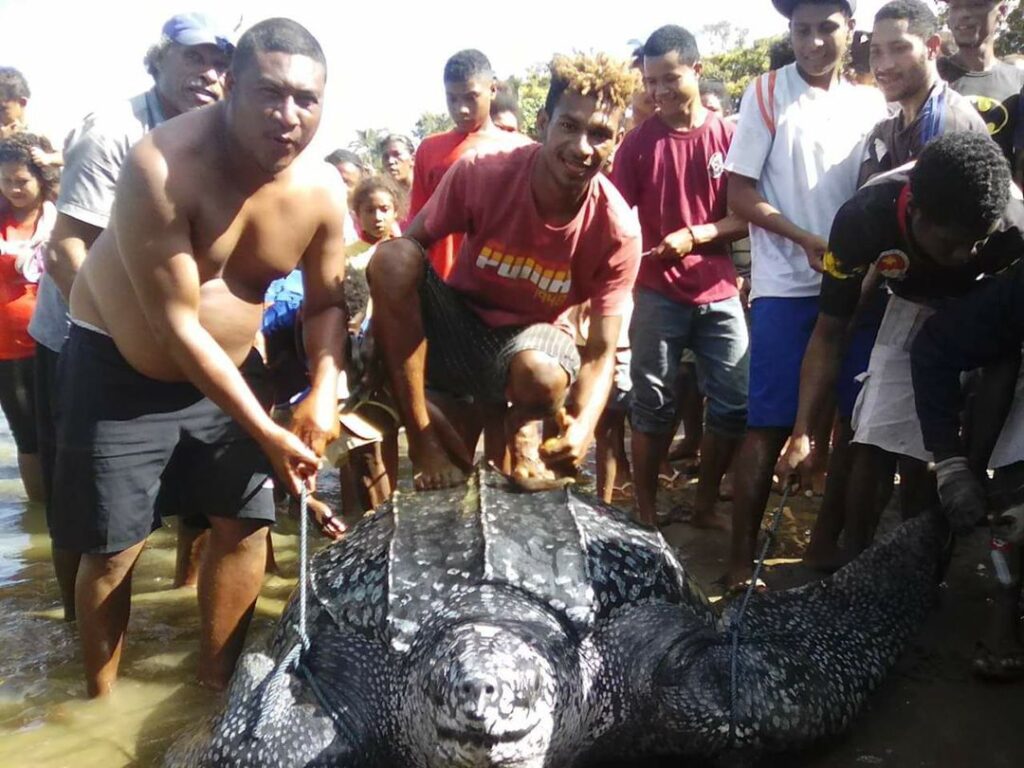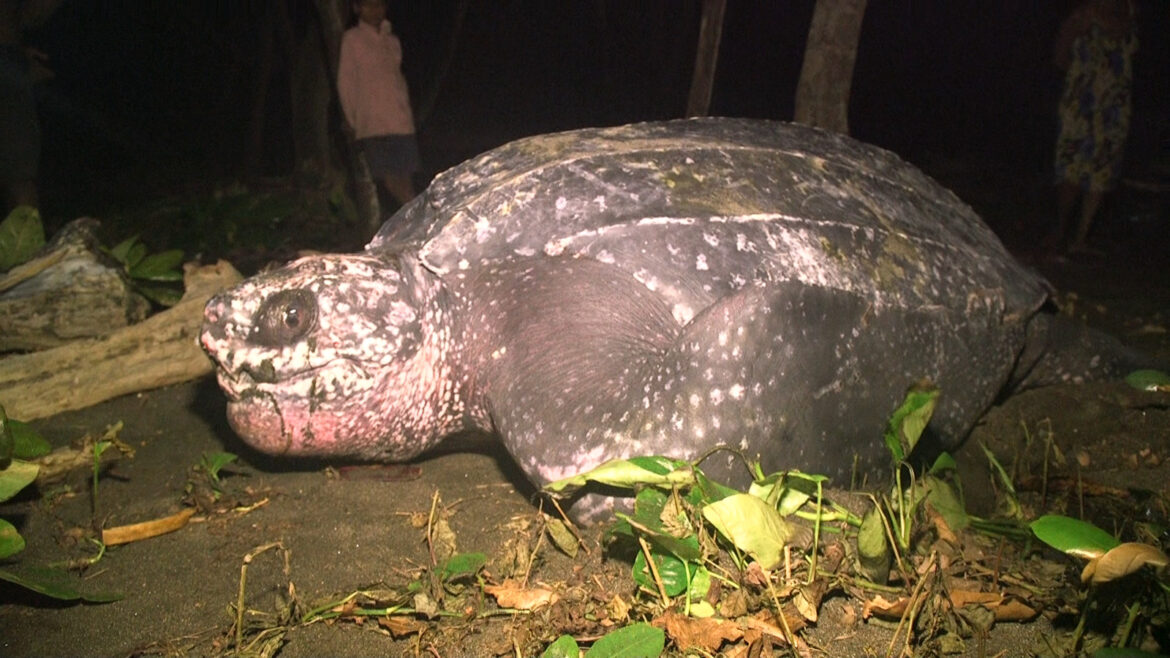by Martha Louis (Inside PNG)
The Pacific Leatherback turtle, an awe-inspiring species, now faces critical endangerment due to numerous factors, including industrial fishing, nestling and egg harvesting, and water pollution. Despite these challenges, leatherback turtles hold immense cultural significance for indigenous communities in Papua New Guinea.
Villages such as Karkum, Tokain in Sumkar, and Mur, Yamai, and Male in the Raicoast region of Madang Province, have a rich heritage of legends, songs, dances, and rituals associated with sea turtles. These communities have a profound connection with these gentle giants, reflecting their historical ties and traditional practices.
Indigenous lore celebrates the leatherback turtle’s influence, evident in traditions like the Dalal song, which imitates the turtles’ movements during nesting, symbolizing the deep bond between the communities and these majestic creatures. For instance, the Dawang clan of Mur traces its origins to the sacred leatherback turtle, believing they can catch and utilize them as food or currency through sacred rituals. Karkum’s Legend, a captivating tale of transformation, highlights the cultural significance of leatherback turtles by narrating the tale of a woman who morphs into a turtle and embarks on a journey of resilience.
The population of Pacific Leatherback turtles has dramatically declined by over 90% in just two decades, primarily due to industrial fishing, nestling harvesting, water pollution, and plastic accumulation in the ocean.
Additional factors, including chemical use in agriculture, accidental entanglement in fishing gear, and predation by dogs and feral pigs, have contributed to the irreversible decline of other nesting species like green turtles, hawksbill, and loggerhead varieties.
Preservation efforts should focus on safeguarding the areas where leatherbacks nest, forage, and migrate.
Papua New Guinea’s Huon coast, near the industrial city of Lae in Morobe province, along with sporadic sites in Madang and islands such as New Britain and Bougainville, have been identified as critical nesting sites. To prevent leatherback turtles from the brink of extinction, it is crucial to recognize their vital role in the lives and traditions of indigenous communities and work collectively to ensure their conservation.
The Sea Turtles Restoration Project: Wenceslaus Magun, an ardent advocate for environmental protection in the Western Pacific, has dedicated his life to educating Papua New Guineans, particularly in Madang and across the country, about preserving endangered species like the leatherback turtle.
Collaborating with the Turtle Island Restoration Network, Magun has spearheaded the Sea Turtles Restoration Project in Karkum village. This project aims to protect endangered sea turtles, preserve cultural heritage, safeguard marine habitats, ecosystems, and biodiversity, restore food sources, stimulate alternative economic opportunities, and promote integral human development.
The primary objective of the Sea Turtles Restoration Project is to create a conducive environment for marine and near-shore resource management plans through the participation of the resource owners.
By empowering indigenous communities in Papua New Guinea, the project aims to preserve their environment, benefitting both the endangered species like leatherback turtles and the people who rely on them for sustenance. Recognizing the importance of preserving cultural practices, the project seeks sustainable solutions that harmonize community needs with environmental protection.
Through the Sea Turtles Restoration Project, Magun and his team strive to raise awareness about preserving endangered species and their habitats while fostering alternative sources of income for local communities.

By adopting a holistic approach to conservation, the project aims to create a sustainable future, empowering communities in Papua New Guinea to take charge of their environmental welfare.
To ensure the project’s long-term success, Mr. Magun collaborated with the Turtle Island Restoration Network to establish the local NGO, Mas Kagin Tapani (MAKATA) association, which sustains the Sea Turtle Restoration Project.
On November 17, 2008, three representatives from each of the four clans in Karkum village signed a conservation deed, granting them greater control and power over their resources. The deed preserves customary practices and enables the villagers to become direct custodians and stewards of their resources. This landmark event empowers them to assert their customary rights, respond to threats, assist in land and sea management, identify crucial protection areas, and preserve and safeguard their traditional knowledge.
Protecting the leatherback turtles of Papua New Guinea requires a concerted effort to balance environmental conservation with the cultural significance bestowed upon these majestic creatures. By acknowledging the integral role of leatherback turtles in the lives and traditions of indigenous communities, we can work together to ensure their preservation. Through initiatives like the Sea Turtles Restoration Project and the dedication of advocates like Wenceslaus Magun, Papua New Guineans are striving to create a sustainable future that respects both their cultural heritage and the delicate ecosystems that support these endangered species.
***
Reporting for this story was supported by Internews’ Earth Journalism Network


Comments are closed.